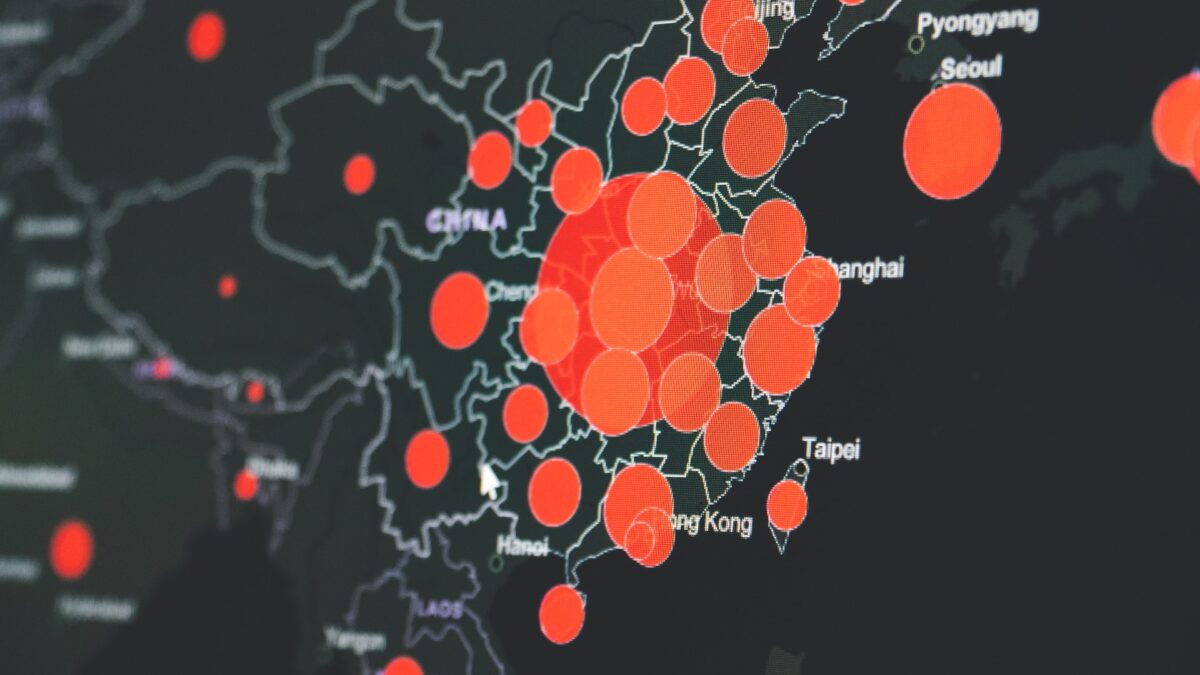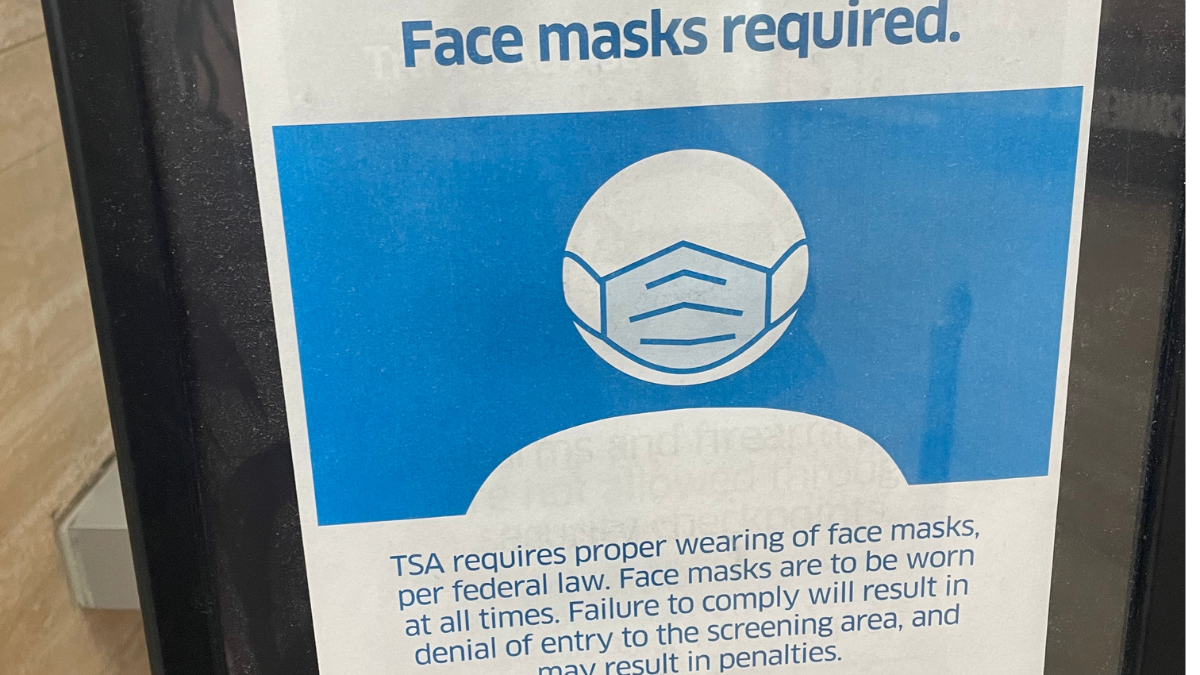
Thousands of media headlines noted hospitalizations for COVID-19 in South Dakota recetly climbed sharply for several weeks. According to sources from the White House down to CNN and local press, it’s because Gov. Kristi Noem refused to institute COVID restrictions like masks, business shutdowns, and gathering limits.
“The state had nearly 2.5 times the national average in COVID-19 deaths per 100,000,” local press outlet Keloland reported in early December. Joel Shannon at USA Today wrote the Dakotas “are as bad as it gets anywhere in the world.” Accompanying headlines paint Noem as reckless and uncaring, since her grandmother died in a nursing home “hit by COVID” and she is still encouraging people to go shopping in person.
If left-leaning media were honest, though, they’d at least apply the lessons of New York, a state with a similar if not better health risk profile, to their coverage of South Dakota. They would give Noem the same lenient coverage they granted New York Gov. Andrew Cuomo at the height of one of the steepest COVID waves in the world—which occurred even though he shut down as much of the state’s economic and social activity as he could.
In reality, South Dakota’s reported cases and hospitalizations have been, as of this writing, trending downward after peaking on November 10 at 702 hospitalizations per million. The state has seen 1,279 COVID-attributed deaths.
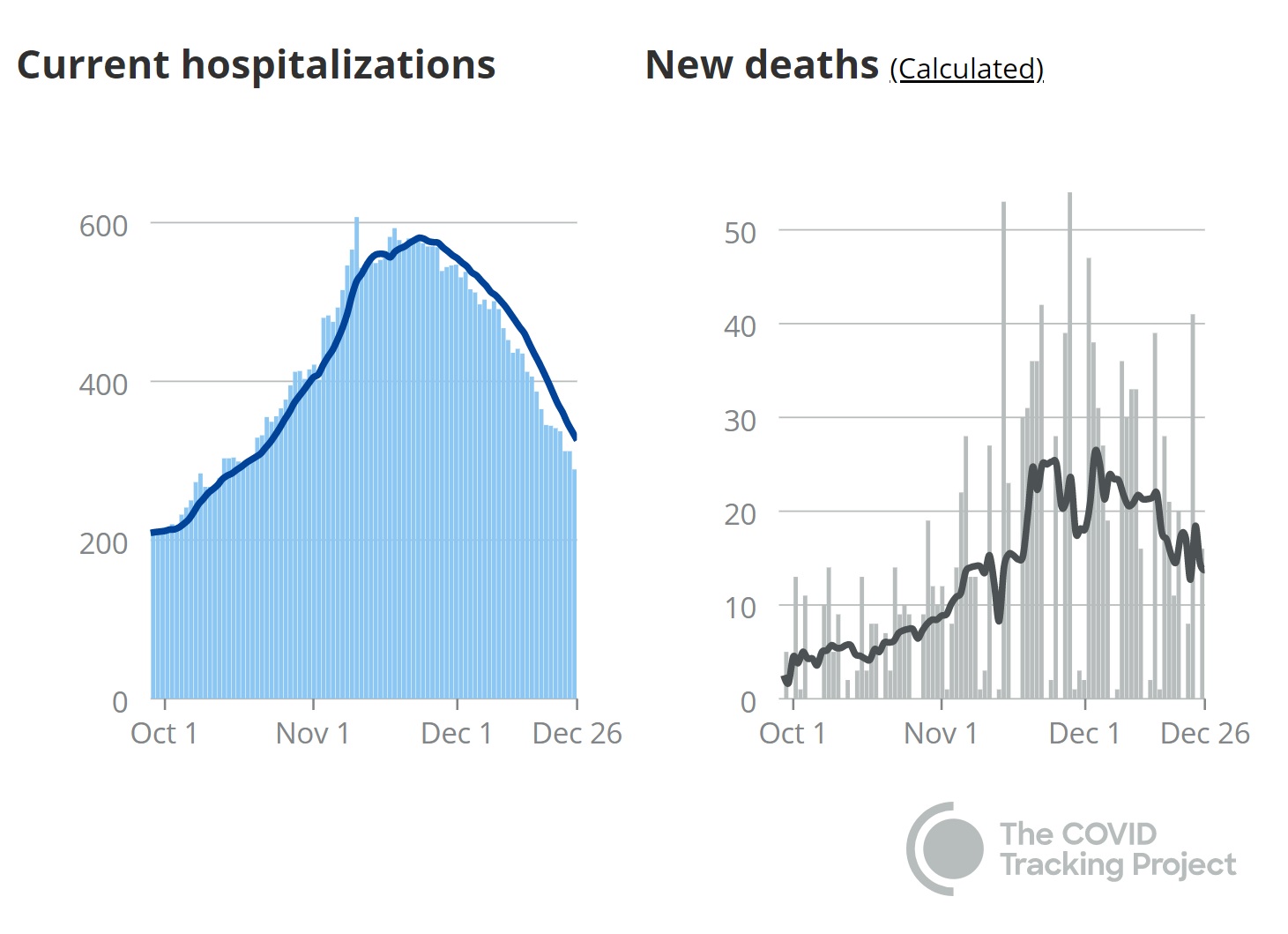
(South Dakota, accessed December 27)
Comparatively, New York’s per capita death rate stands at 188 per 100,000 and set the national record for most hospitalizations at 968 per million in April. These numbers should trigger at least a momentary break from the lockdown narrative to consider that perhaps high rates of COVID hospitalizations and deaths may have more to do with the health risk profiles of a state’s constituents, or other factors, than lockdown policies.
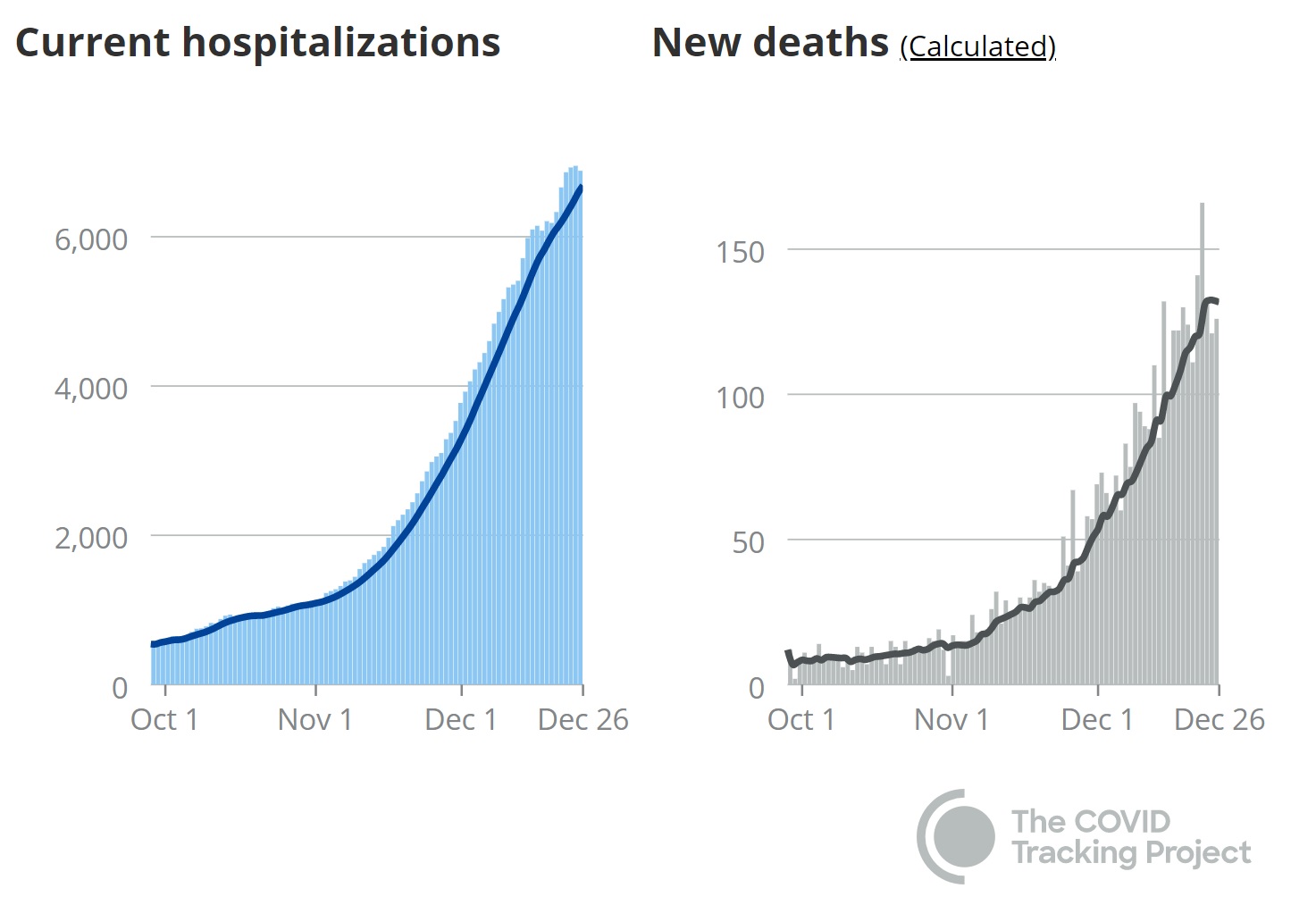
(New York, accessed December 27)
For context, South Dakota didn’t experience a major spring surge like Michigan or Washington DC, only a mild swell that brought total excess deaths to just barely pop over the baseline for a single week. What the state is experiencing now seems to be the major wave that computer models predicted but didn’t manifest until COVID’s regional season kicked in, not a “reliving” of a nightmare because the government hadn’t “learned its lesson.”
Wyoming, Montana, North Dakota, and Minnesota are experiencing new waves as well. It’s also worth noting that the United States as a whole has been over the Centers for Disease Control (CDC) threshold for excess deaths for eight straight months, while South Dakota has exceeded it for about four. This entire time, South Dakota has pursued the same prudent policies that largely allow individuals and businesses to make their own health precautions as opposed to most states’ and countries’ use of forced masks and rolling shutdowns.
It may seem strange to compare such a sparsely populated state like South Dakota to a mega-metropolitan area like New York, but population density seems to be a weak predictor of COVID mortality and degree of urbanization only moderately predictive (see Figure 4 of this study). On the other hand, population risk factors that substantially increase COVID mortality are similarly prevalent in the two states. New York and South Dakota have the 26th and 24th highest percentages of seniors in the United States, respectively. As the CDC reports, eight out of ten reported COVID deaths are among people over the age of 65.
Percentages of elderly residents are approximately the same in the two states, even when broken down by decade (e.g. 65-74), according to data compiled by Stacker. Those between 65-74, 75-84, and older than 85 are at 90 times, 220 times, and 630 times higher risk for death with COVID than those under age 30, according to the CDC. The Mount Rushmore State ranked in the top 10 nationally for the number of residents older than age 85 in 2015, so the two states’ high percentages of deaths in long-term care facilities (25 percent for New York and 43 percent for South Dakota) make sense despite the vast difference in population size.
Perhaps if South Dakota were run by Democrats, journalists would spend less time ginning up hysteria and more time presenting such information that may provide context to South Dakota’s COVID numbers. Major factors besides age for COVID mortality are higher in South Dakota compared to New York, too.
For example, extreme obesity (a body-mass index over 40) doubles risk of COVID mortality, according to a study done by Kaiser Permanente researchers. South Dakota’s obesity rate is 20 percent higher than New York (33 percent to 27.1 percent). New York’s estimated rate of diabetes, a condition that can double or triple COVID mortality according to multiple studies, is slightly higher (10.5 percent to 9 percent), but the mortality rate for diabetes is almost 25 percent higher in South Dakota.
Cigarette use is also 39 percent higher in South Dakota (19 to 12.8 percent). Smoking is associated with “a nearly two-fold higher mortality rate” among COVID patients, according to a meta-analysis of available studies.
The states also have differing ethnic compositions, yet another factor that is difficult to sort out. None of this changes that New York’s COVID curve was a veritable cliff, and severe lockdown didn’t have any discernible impact on that curve.
Indeed, given the strong demographic similarities, the facts about lockdown are hard to ignore: New York managed to rank No. 2 in COVID death rates despite hard and repeated lockdowns, while Noem’s open state with limited city-based mask mandates currently sits at No. 7. While the Black Hills region is close to maxing out adult ICU capacity, the state’s other regions have plenty, and case and hospitalization curves have been trending downward without the “help” of business shutdowns, capacity caps, or gathering limits.
South Dakota’s infection curves match those of numerous other states and countries regardless of the level of lockdowns or the existence of mask mandates. It’s still possible that when this wave is over, South Dakota’s death rate could rival that of New York. But to assume New York’s curve would have been significantly higher if the Empire State had stayed open while also believing South Dakota’s curve would have been even lower if Noem had only locked down, despite a higher prevalence of risk factors, is tortured logic.
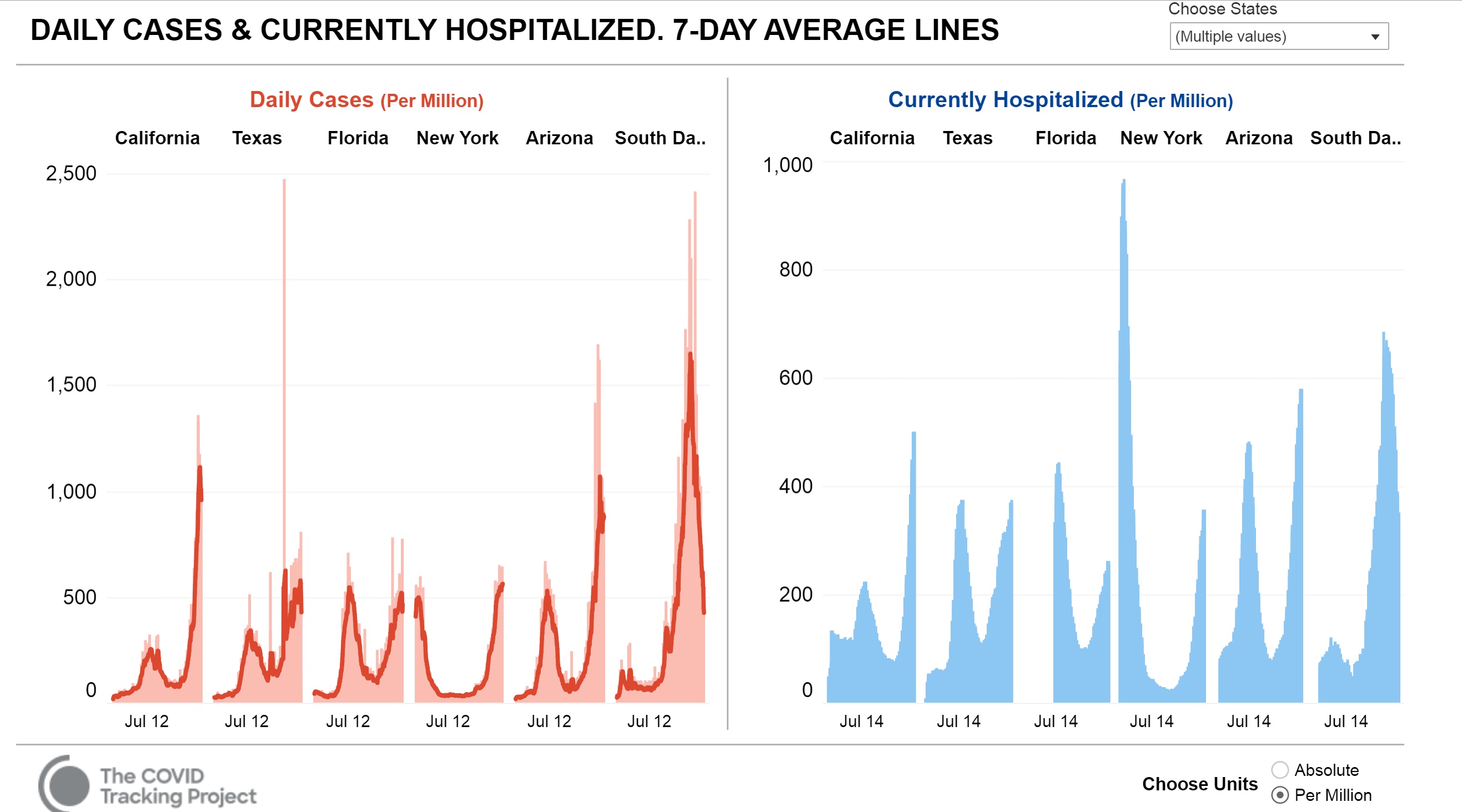
In short, lockdowns as the solution for any COVID situation is a belief held in spite of the evidence, rather than because of it. If the media were intellectually honest, they’d consider New York’s wave and give Noem the benefit of the doubt.


